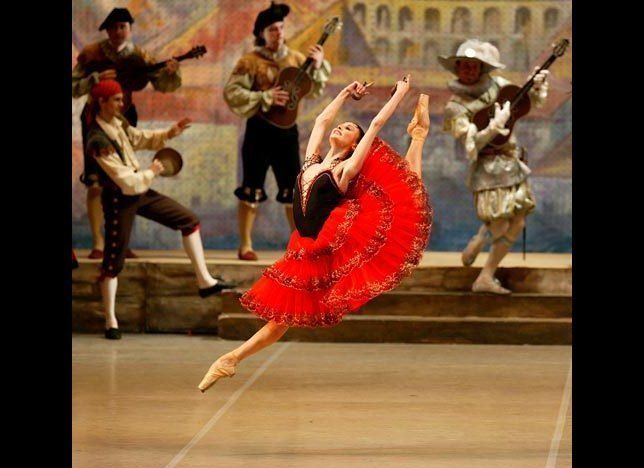"Now, I have a question for you. Which country has the best ballet? Yours? You do not even have a permanent opera and ballet theater."
-N. Khrushchev, 1959
As pundits proclaim relations between Washington and Moscow at a historic low, it's worth remembering that they have, in fact, been lower. And that when they were, the U.S. was having a lovefest with Russian ballet.
The Bolshoi Ballet kicks off a week long Washington engagement on Tuesday, on a stage that owes an existential debt to the company. In its forty-three years of artistic excellence, the Kennedy Center has been a regular host to the Bolshoi. But for the first decade of cultural exchange between the Soviet Union and the U.S., the nation's capital was hard-pressed to provide a suitable venue for a company that brought along forty tons of scenery when it travelled abroad.
"For the USSR's most celebrated group not to play the capital of the United States raises a theatrical booking into an international incident," dismayed the Washington Post's theater critic in 1959 when the itinerary for the historic first Bolshoi tour in America bypassed the District. Hectic negotiations secured a compromise -- a single performance of adapted excerpts staged in a lovely, but antiquated, movie palace.
The line for the one-night stand at the Capitol Theater stretched for miles. Advocates for a National Culture Center to serve as an artistic "beacon to the free world" stepped up their drumbeat.
Three years later, the Capitol Theater was still the best that DC could muster when the Bolshoi returned for a longer engagement. But once again, Washington rose to the occasion, greeting the Russians with enthusiasm and folding chairs in the aisles. The White House opened its doors to the whole troupe of 130 dancers; President Kennedy attended the premiere (or at least two of Swan Lake's four long acts); and Jackie and Caroline raptly observed rehearsals.
What's remarkable about the reception was that it took place just a few weeks after both nations seriously considered the prospect of mutual annihilation over a battery of Soviet missiles in Cuba. Concerns about the sub-standard floor of the Capitol Theater were muted. After all, there was a true international incident being defused in multiple time zones.
A wit at the International Herald Tribune couldn't resist: "We always suspected it. And now we know it. The Russians have a secret weapon ... something more powerful than nuclear weapons ... the Bolshoi Ballet."
The November 1962 Bolshoi Ballet tour was an obvious win for the four-year old cultural exchange program between geopolitical foes. The company returned in 1966 and in 1975 made its first appearances at the world-class theater named for the President who stood for the Soviet anthem during a nadir in Cold War relations.
The present U.S. condemnation of Russia's trampling on Ukrainian sovereignty is no Cuban Missile Crisis. Even more starkly, the Bolshoi - though it still sells out at the box office - has long ceased to be the exotic import that drew crowds who didn't know a fouette from a funnel cake. But when the Bolshoi Ballet occupies Foggy Bottom next week, it would be nice if both the artists and the audience made a gesture of mutual respect. One that could be heard beyond the auditorium.
